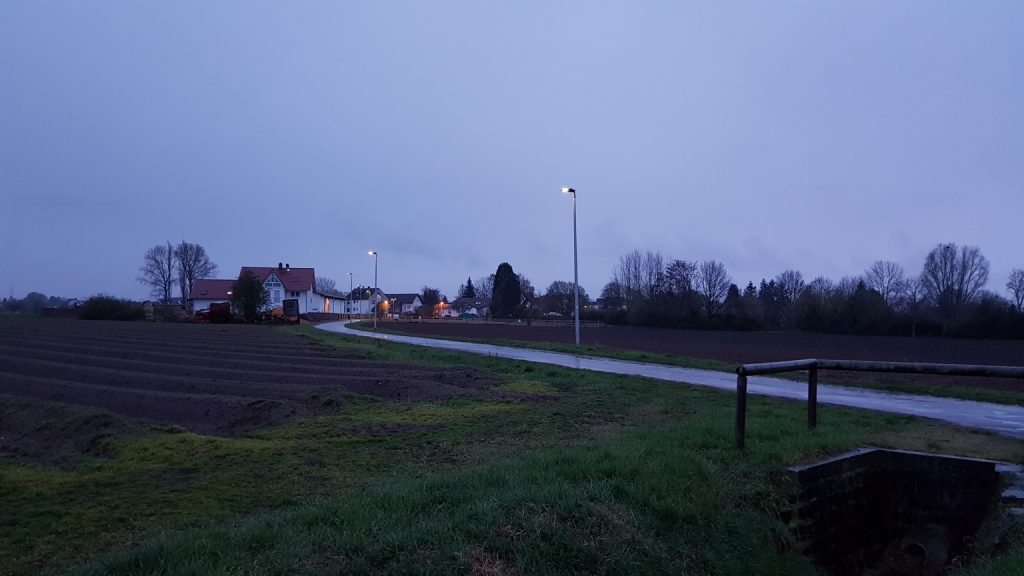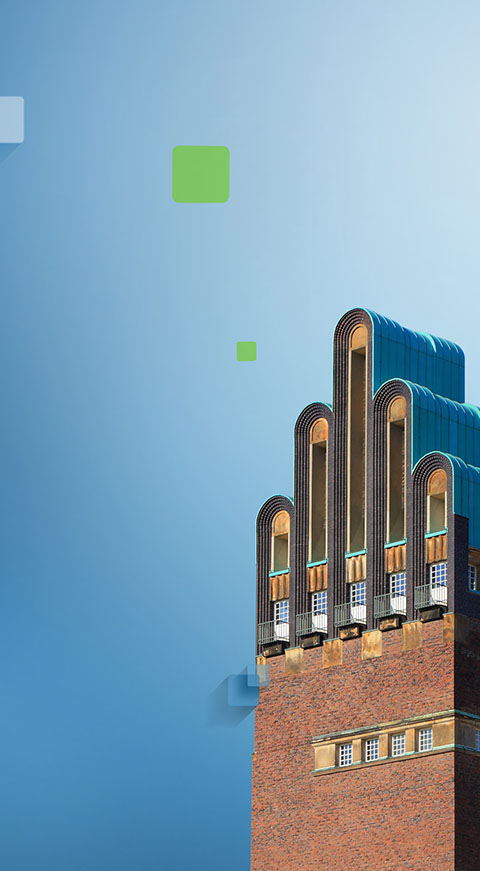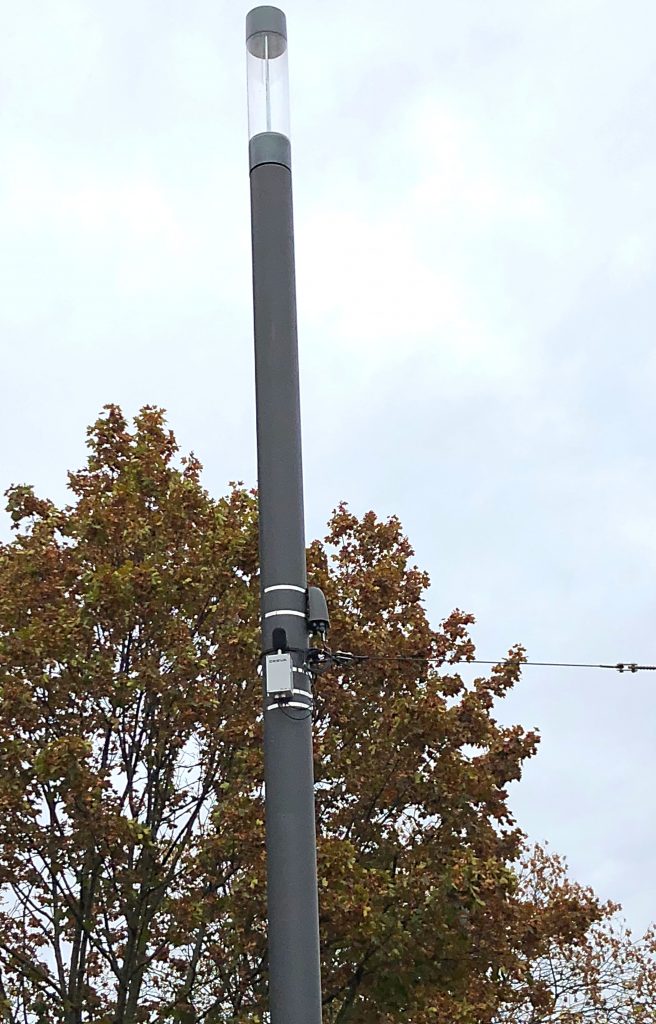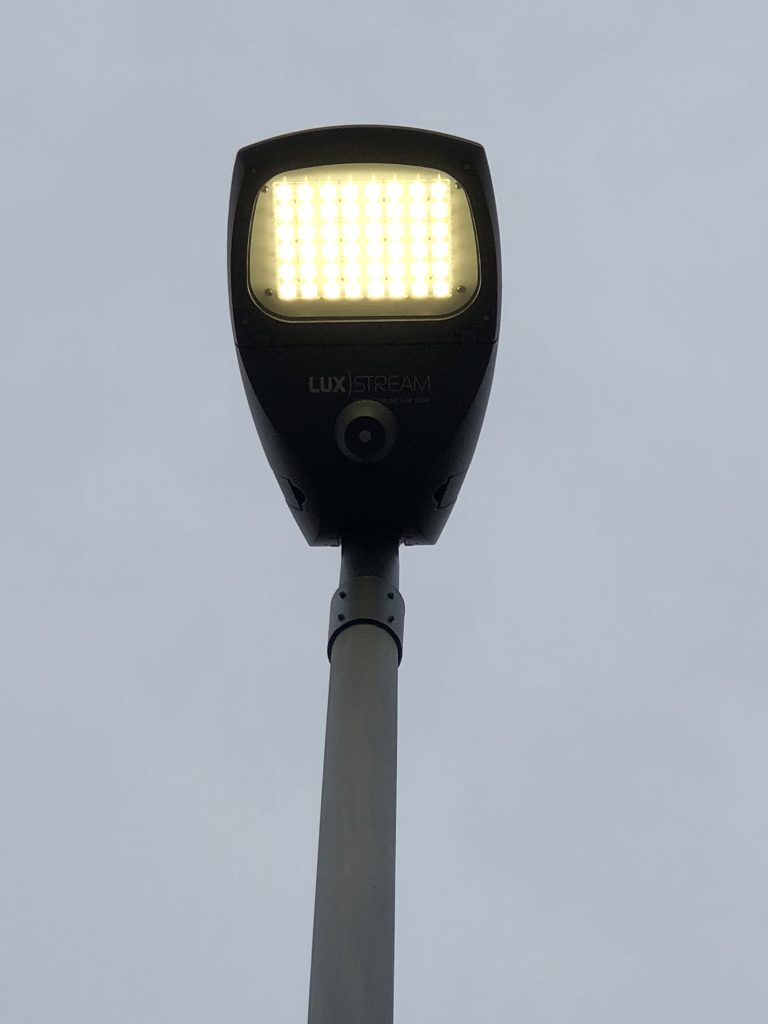Smart Lighting
Intelligent streetlights for Darmstadt

In the “Smart Lighting” project, street lamps around the Residenzschloss are equipped with special sensors so that, in addition to their function as pure traffic and city lighting, they can also be used for measuring traffic volumes, for air quality analyses, or to determine noise levels.
For this purpose, data on the traffic situation, air quality, and noise levels are continuously measured. These are transmitted to the system every 15 minutes and recorded. This allows the current traffic situation between the three defined points around the castle and over different time periods to be analyzed. Current air quality data can be read out to determine whether air quality is above or below the limit values, for example, and to adjust traffic lights accordingly or implement other measures to improve air quality.
The future benefit for citizens will be to make the data accessible and provide information about air quality, for example, via smartphones or displays. This project is being implemented jointly with partners ENTEGA AG, e-Netz Südhessen, ICE-Gateway, and Vodafone.
Data protection is a priority for everyone involved: Data collection in the project is carried out via the Bluetooth modules built into the iceMEC (“computer on the lamppost that immediately converts or neutralizes all information”). The sensors count all activated Bluetooth devices of pedestrians and drivers (e.g., smartphones, headphones, etc.). The ICE gateway pings the devices via Bluetooth. The MAC address of a device is used for this purpose. The first six digits of this MAC address are immediately truncated and not used, while the remaining six digits are converted into a hash. This all happens locally in the processing unit (edge computing); no data is transmitted or stored. This process ensures that no personal reference can be established. In short: The received data is immediately anonymized in the iceMEC. Only the number of pedestrians or vehicles is transmitted.
The distinction between pedestrians, vehicles, etc. is derived from the speed (slow, fast, very fast) of the signal transmission (hash) between two points (iceMEC). The lamps are connected to each other or communicate with each other. These are absolute approximations. However, this is not the main use case in the project. The primary goal here is to measure environmental values in the air. This information is transmitted in encrypted form for processing. The result is purely counted values of the modes of movement. This is therefore a statistical recording. The ICE gateway (iceMEC) itself is not accessible from the outside; this is ensured by a patented process in which only the gateway connects to the server in the data center.
On Schleifweg in Wixhausen, which is also used as a school route, 17 LED streetlights are equipped with special sensors that implement the principle of adaptive lighting. The installed sensors react to the environment and road users – without collecting personal data – and adjust the lighting accordingly.
Adaptive lighting is particularly useful on routes where there is no regular traffic flow and the artificial light can be reduced to a minimum level when the route is not in use.
The environment benefits because less CO2 is emitted during energy production. Plants that require darkness for their growth cycle are protected, and nocturnal animals are helped to orient themselves better when searching for food. Another important aspect for citizens is safety: more precise lighting reduces the number of dark areas for pedestrians, cyclists, and runners in the dark. At the same time, light pollution – the lack of perception of light and dark due to constant illumination – can be counteracted because the light only reaches where it is needed. The energy savings are also enormous, as the built-in sensors detect even the slightest changes in daylight and can regulate their brightness accordingly. Compared to conventional lighting, which requires about five times as much energy as LEDs, this results in a reduction of around 87 percent. In addition, the LED lights have a long service life and require little maintenance.
The LED lights and sensors are integrated into a secure network via the Internet of Things (IoT). The collected data is highly encrypted and centrally transmitted to a platform, analyzed, and graphically displayed. The lighting management system allows those responsible to access the lighting system at any time and adjust the lighting zones and illuminance.



